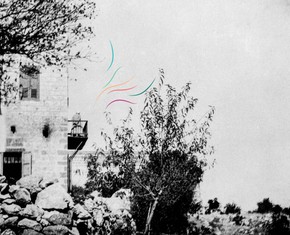The views expressed in our content reflect individual perspectives and do not represent the authoritative views of the Baha'i Faith.
When we think about acts of heroism, we often think of bravery in rescue operations, rushing into burning buildings and facing danger in battle—but we don’t usually associate heroism with religion.
But many, many devoted souls have sacrificed everything for their deepest beliefs, starting with the prophets and founders of the great Faiths, who inspired believers to follow in their footsteps.
So who are the heroines and heroes of the Baha’i Faith?
They start with the Babis, the followers of the Bab, the prophet who came to herald the coming of Baha’u’llah. The Babi revelation, which began in 1844, generated tremendous persecution from the governmental and religious authorities of the time, which resulted in massive heroism—and the deaths of thousands upon thousands of Babis.
Would You Volunteer for an Execution?
One young man by the name of Muhammad-Aliy-i-Zunuzi—who was later named Anis by the Bab himself—evinced enormous heroism. Anis literally means “close companion,” and he was the Bab’s close companion, because he was subsequently martyred with the Bab in Tabriz in 1850. Anis heard about the Bab from a traveling teacher. At that time the Bab had been confined in the Castle of Chihriq in northwestern Iran, imprisoned there by a government that feared the rapid spread of his Faith. Hearing the circumstances surrounding the Bab’s imprisonment at Chihriq, Anis felt so spiritually enkindled that he had a deep longing to sacrifice himself in the path of his beloved Bab.
In 1850, a new prime minister ordered the execution of the Bab on the capital offense of apostasy. The Bab was brought to Tabriz, where he would be killed by a firing squad. The night before his execution, as he was being conducted to his cell, Anis threw himself at the feet of the Bab, asking to be executed with him. He was immediately arrested and placed in the same cell as the Bab.
On the morning of July 9, 1850, the Bab was taken to a public square, where thousands of people had gathered to watch the execution. The Bab and Anis were suspended from ropes on a wall and a large firing squad prepared to fire. Numerous eyewitnesses, including western diplomats and journalists, reported that the firing squad’s volley filled the square with musket smoke. When the smoke cleared, however, the Bab was nowhere to be seen, and his companion Anis was left completely unharmed.
Amid a great commotion in the crowd, many believing the Bab had ascended to heaven, the soldiers subsequently found the Bab in another part of the barracks, also untouched by the firing squad’s bullets. He and Anis were tied up for execution a second time, a second firing squad was arranged, and a second order to fire was given. This time, the Bab and his companion Anis were killed. Their remains were then dumped outside the gates of the town to be eaten by animals. Their bodies, however, were secretly rescued by a handful of Babis and were hidden. Over time, the remains were then transported from place to place and are now buried on Mount Carmel in Haifa, Israel.
You Will Never Stop the Emancipation of Women
At the time in Iran, when women were typically kept illiterate and hidden from the public sphere, a young, highly-educated female Babi became a heroine of her Faith by ensuring the emancipation of women.
Watch: Tahirih, Breaking Barriers for the Freedom of All Women
In a particularly dramatic display of her leadership, Tahirih, sometimes known as Qurratu’l-Ayn, of Qazvin, appeared unveiled before an assemblage of men and gave an eloquent speech about the need to reject the old patterns of society. The act was so shocking to the audience that one man stood up and slit his own throat at the sight of her face. In 1852, at the age of 38, Tahirih was killed for her beliefs and activities. Her last recorded words were, “You can kill me as soon as you like, but you will never stop the emancipation of women.” The Baha’i teachings describe her this way:
History records the appearance in the world of women who have been signs of guidance, power and accomplishment. Some were notable poets, some philosophers and scientists, others courageous upon the field of battle. Qurratu’l-Ayn (Tahirih), a Baha’i, was a poetess. She discomfited the learned men of Persia by her brilliancy and fervor. When she entered a meeting, even the learned were silent. She was so well versed in philosophy and science that those in her presence always considered and consulted her first. Her courage was unparalleled; she faced her enemies fearlessly until she was killed. She withstood a despotic king, the Shah of Persia, who had the power to decree the death of any of his subjects. There was not a day during which he did not command the execution of some. This woman singly and alone withstood such a despot until her last breath, then gave her life for her faith. – Abdul-Baha, The Promulgation of Universal Peace, pp. 74-75.
Shoghi Effendi, the Guardian of the Baha’i Faith, named the first age of the Babi and Baha’i Faiths the Heroic Age. From 1844-1921, that initial period created a close association between the virtues of courage, steadfastness and heroism with the Baha’i Faith’s early history. This designation of the Baha’i Era’s first seventy-seven years, based upon his assessment of “the holocaust which baptized its birth,” honors the 20,000 faithful souls who gave their lives for the faith proclaimed in 1844 by the Bab.

















Comments
Sign in or create an account
Continue with Googleor